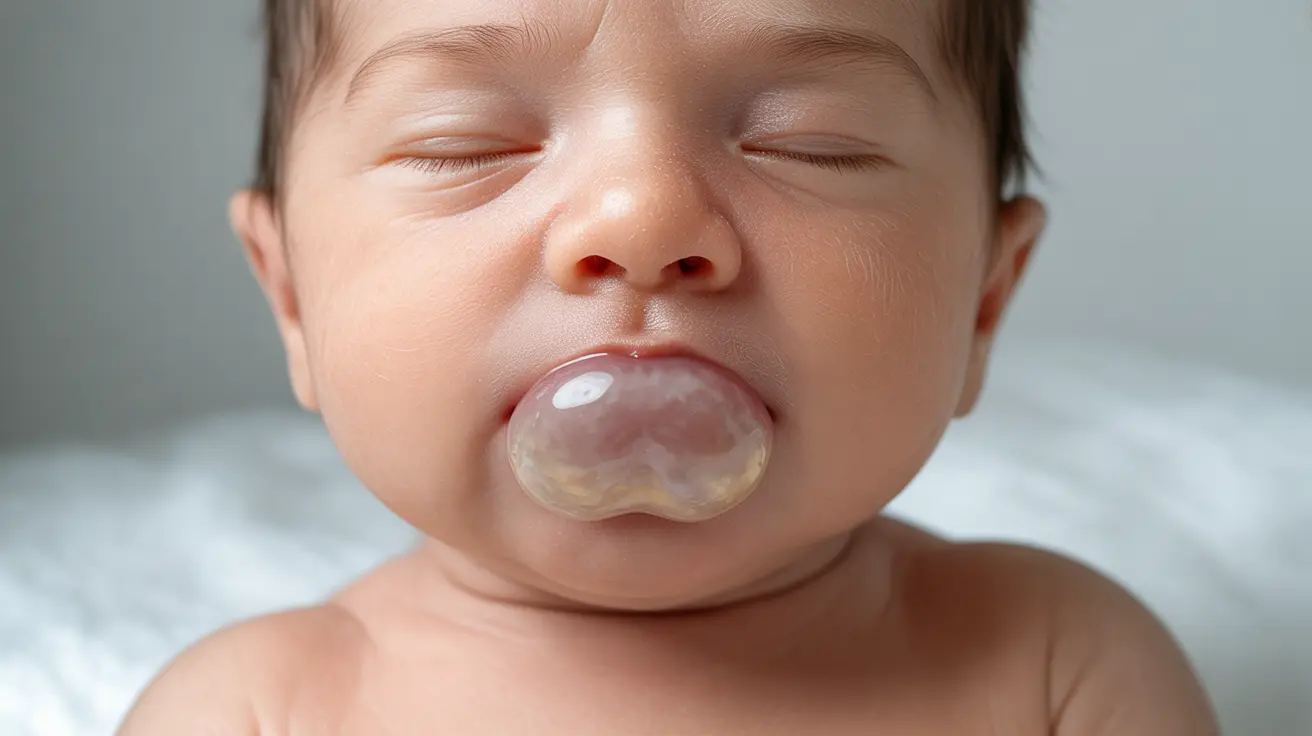Discovering a blister on your newborn's lip can be concerning for any parent. These small, fluid-filled bumps are often a natural result of your baby's feeding behavior, but understanding their causes and knowing when to seek medical attention is crucial for your peace of mind and your baby's health.
In this comprehensive guide, we'll explore everything you need to know about newborn lip blisters, from their common causes to proper care and warning signs that require medical attention.
Understanding Newborn Lip Blisters
Newborn lip blisters typically appear as small, raised areas on your baby's upper or lower lip. These blisters most commonly develop due to the vigorous sucking motion babies make while feeding, whether through breastfeeding or bottle-feeding.
These sucking blisters, also known as nursing blisters, are generally harmless and often indicate that your baby is developing a strong sucking reflex – an essential skill for successful feeding.
Common Causes of Lip Blisters in Newborns
Sucking Blisters
The most frequent cause of lip blisters in newborns is the natural sucking motion during feeding. These blisters form when the repetitive pressure and friction from sucking create small, fluid-filled bumps on the lips.
Improper Latch
Sometimes, lip blisters can develop due to an improper latch during feeding. This occurs when the baby doesn't form a proper seal around the nipple or bottle, leading to increased friction on the lips.
Impact on Feeding and Comfort
While lip blisters may look uncomfortable, they rarely interfere with feeding or cause pain to your baby. Most newborns continue to feed normally even with the presence of these blisters. However, proper feeding technique and positioning can help prevent their occurrence or recurrence.
When to Seek Medical Attention
While most newborn lip blisters are harmless, certain signs warrant medical evaluation:
- Blisters that appear filled with yellow fluid or pus
- Redness spreading beyond the blister
- Fever or unusual fussiness
- Blisters that don't heal within 1-2 weeks
- Multiple clusters of small blisters
Prevention and Care
To help prevent lip blisters and ensure proper feeding:
- Ensure proper latching technique during feeding
- Keep your baby's lips moisturized with breast milk or safe, pediatrician-approved moisturizer
- Monitor feeding position and adjust as needed
- Maintain good hygiene during feeding sessions
Frequently Asked Questions
What causes lip blisters in newborns and how can I tell if they are harmless sucking blisters?
Sucking blisters typically appear as single, clear fluid-filled bumps on the lips that develop from feeding. They're usually painless and don't interfere with feeding. These blisters are distinguishable by their location on the lips and their association with feeding activities.
How do sucking blisters on a baby's lip affect breastfeeding or bottle-feeding, and do they need treatment?
Most sucking blisters don't require treatment and don't affect feeding. They typically heal on their own within a few days to weeks. Continue normal feeding practices unless your baby shows signs of discomfort or difficulty feeding.
When should I be concerned about a newborn lip blister and seek medical advice?
Seek medical attention if the blister shows signs of infection (yellow pus, spreading redness), is accompanied by fever, doesn't heal within two weeks, or appears in clusters. Also consult a healthcare provider if your baby shows feeding difficulties or unusual fussiness.
How can I help my baby latch properly to prevent persistent lip blisters from forming?
Ensure your baby's mouth opens wide before latching, with lips flanged outward. Work with a lactation consultant if needed to perfect the technique. For bottle-feeding, use appropriate nipple sizes and maintain proper positioning.
What are the differences between newborn sucking blisters and cold sores on a baby's lips?
Sucking blisters typically appear as single, clear blisters related to feeding, while cold sores often appear in clusters, may be painful, and can be accompanied by fever or irritability. Cold sores are caused by the herpes simplex virus and require immediate medical attention in newborns.




